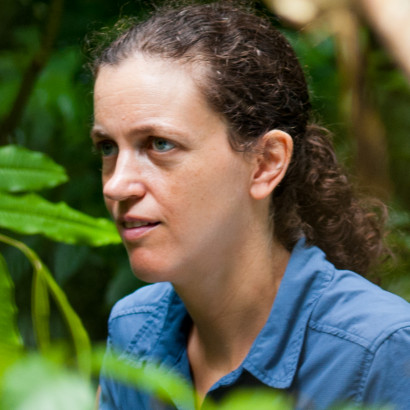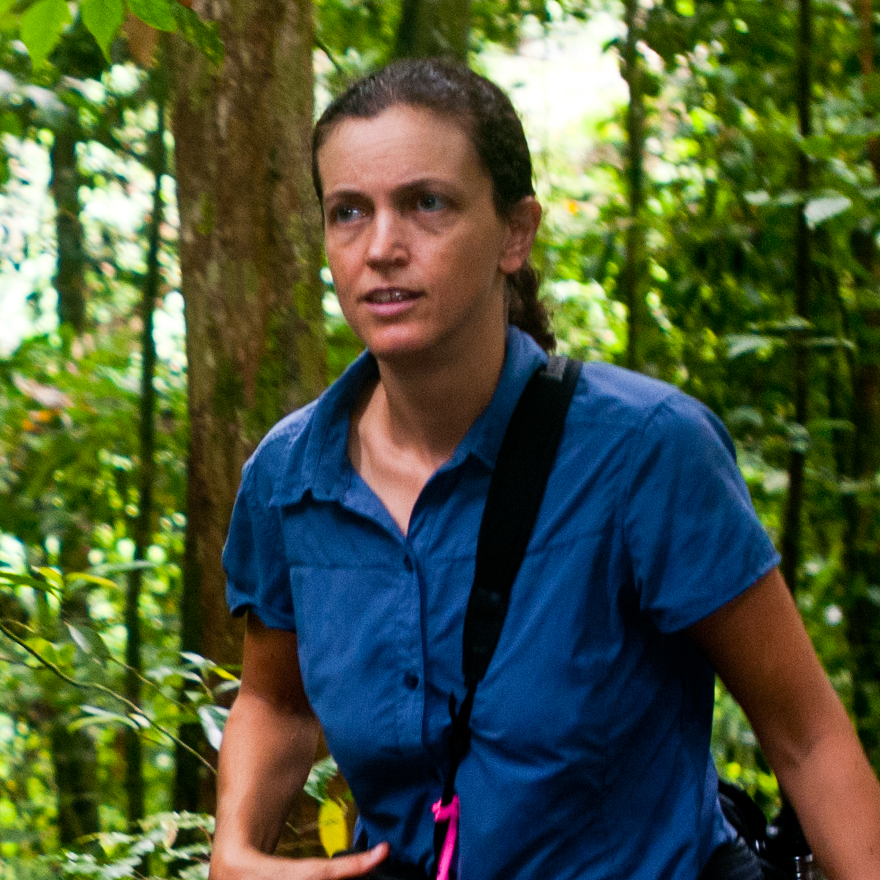Tropical forests vary widely in their structure, productivity, tree death rates, and the relative abundance of trees of different heights, wood properties, drought vulnerability, etc. What are the mechanisms underlying this variation, and how can we capture these mechanisms in models to better understand and predict tropical forests responses to human influences?
B.A., Mathematics and Statistics, Swarthmore College, 1995
M.A., Ecology and Evolutionary Biology, Princeton University, 1997
Ph.D., Ecology and Evolutionary Biology, Princeton University, 2001
Muller-Landau, H. C., K. C. Cushman, E. E. Arroyo, I. Martinez Cano, K. J. Anderson-Teixeira, and B. Backiel. 2021. Patterns and mechanisms of spatial variation in tropical forest productivity, woody residence time, and biomass. New Phytologist 229:3065-3087. https://doi.org/10.1111/nph.17084 (Commissioned Tansley review)
Cushman, K. C., M. Detto, M. García, and H. C. Muller-Landau. 2022. Soils and topography control natural disturbance rates and thereby forest structure in a lowland tropical landscape. Ecology Letters 25:1126-1138. https://doi.org/10.1111/ele.13978
Muller-Landau, H. C. and S. W. Pacala. 2020. What determines the abundance of lianas and vines? Pages 239-264 in Unsolved Problems in Ecology, edited by A. Dobson, D. Tilman, and R. D. Holt. Princeton University Press. Awarded the Smithsonian Secretary’s Research Prize for 2020.
Martínez Cano I, E. Shevliakova, S. Malyshev, S. J. Wright, M. Detto, S. W. Pacala, and H. C. Muller-Landau. 2020. Allometric constraints and competition enable the simulation of size structure and carbon fluxes in a dynamic vegetation model of tropical forests (LM3PPA-TV). Global Change Biology 26:4478-4494. https://doi.org/10.1111/gcb.15188
Gora, E. M., H. C. Muller-Landau, J. C. Burchfield, P. M. Blitzer, S. P. Hubbell, and S. P. Yanoviak. 2020. A mechanistically and empirically supported lightning risk model for forest trees. Journal of Ecology 108:1956-1966. https://doi.org/10.1111/1365-2745.13404
Rutishauser, E., S. J. Wright, R. Condit, S. P. Hubbell, S. J. Davies, and H. C. Muller-Landau. 2020. Testing for changes in biomass dynamics in large-scale forest datasets. Global Change Biology 26:1485-1498. https://doi.org/10.1111/gcb.14833
Broekman, M. J. E., H. C. Muller-Landau, M. D. Visser, E. Jongejans, S. J. Wright, and H. de Kroon. 2019. Signs of stabilisation and stable coexistence. Ecology Letters 22:1957-1975. https://doi.org/10.1111/ele.13349
Muller-Landau, H. C. and M. D. Visser. 2019. How do lianas and vines influence competitive differences and niche differences among tree species? Concepts and a case study in a tropical forest. J. Ecology 107:1469-1481. https://doi.org/10.1111/1365-2745.13119
Larjavaara, M. and H. C. Muller-Landau. 2010. Rethinking the value of high wood density. Functional Ecology 24:701-705. https://doi.org/10.1111/j.1365-2435.2010.01698.x
Muller-Landau, H. C. 2010. The tolerance-fecundity tradeoff and the maintenance of diversity in seed size. Proceedings of the National Academy of Sciences 107:4242-4247. https://doi.org/10.1073/pnas.0911637107



